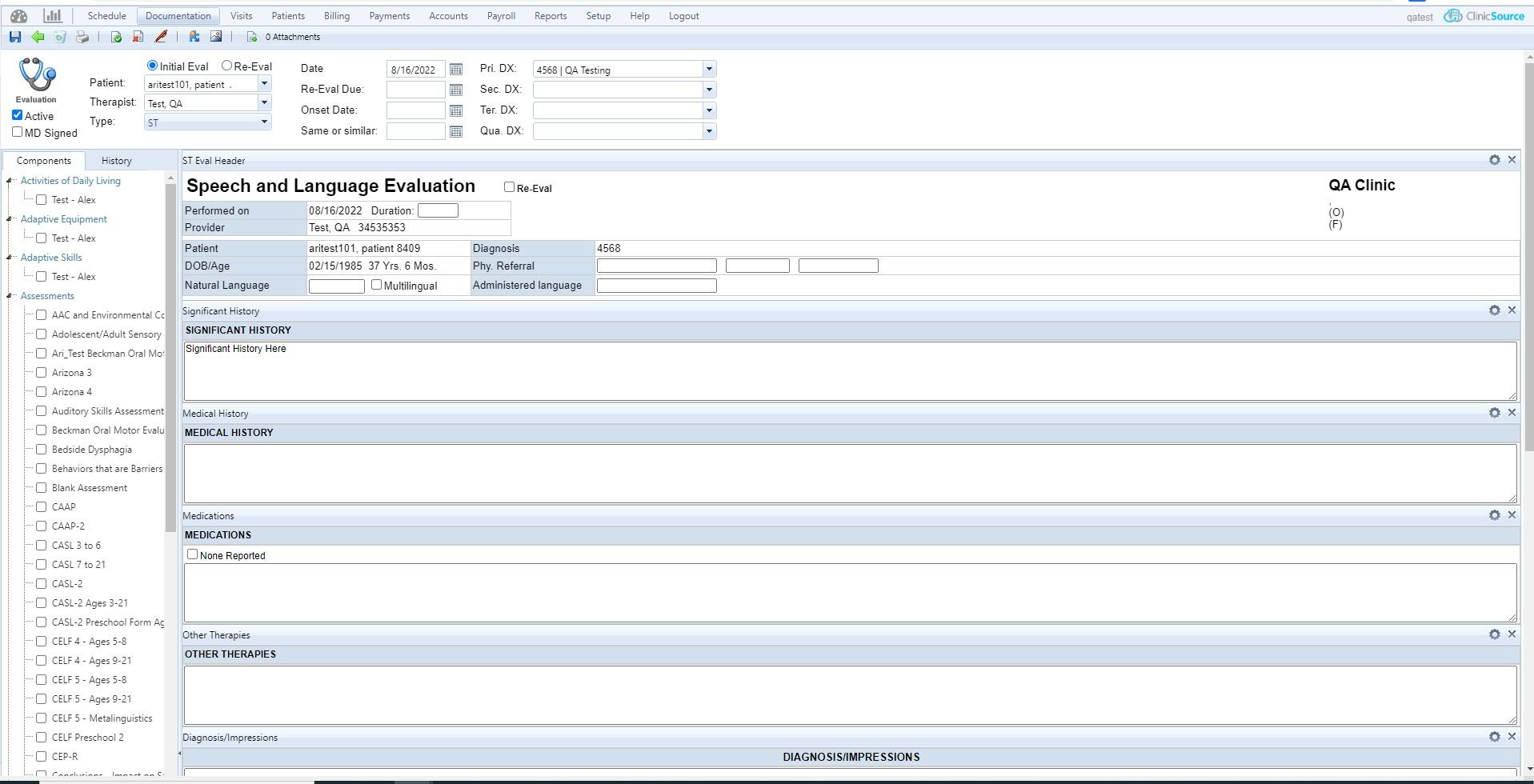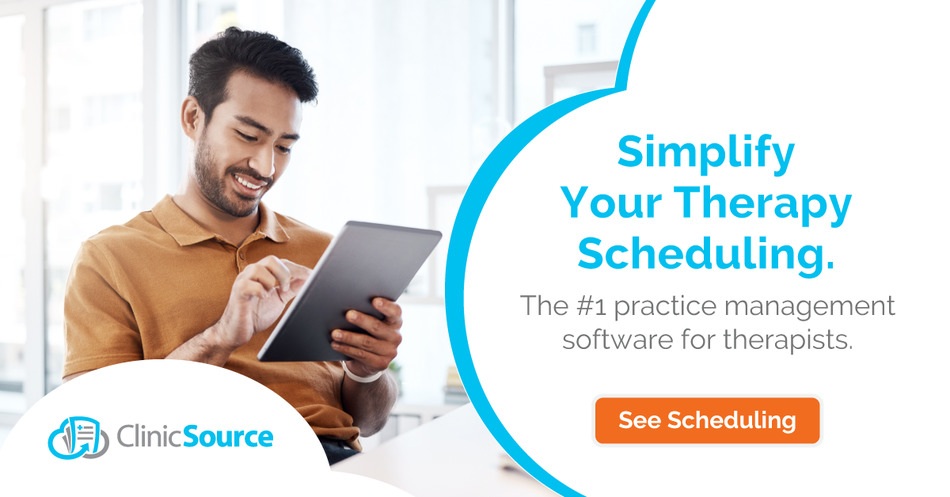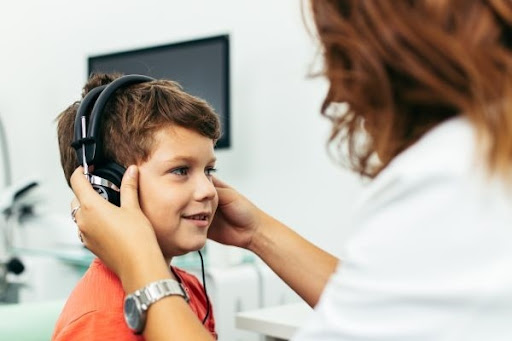
Highlights
- Better Hearing and Speech Month takes place in May and recognizes the close relationship between speech therapy and audiology.
- Speech language pathologists and audiologists can collaborate and exchange resources to formulate better patient treatment plans.
- ClinicSource’s therapy practice management software streamlines documentation for SLPs and provides valuable insight into patient progress for both audiologists and SLPs.
Better Hearing and Speech Month in May recognizes the unique working relationship between audiologists and speech-language pathologists (SLPS). Although their roles may differ, speech therapy and audiology often go hand in hand for helping those with hearing loss and speech, language, or swallowing disorders through diagnosis and intervention.
This team of professionals can work together to provide counseling, set expectations, and advocate for clients to help them achieve the best outcomes for their conditions.
Importance of Teamwork and Collaboration for Speech Therapy and Audiology
Interprofessional practice (IPP) promotes collaboration between health professionals in speech therapy and audiology. IPP consists of four main competencies:
- Fostering a culture of mutual respect when collaborating with professionals from other fields.
- Understanding the roles of those in other professions and how they can work together to meet patient needs.
- Practicing responsive and responsible communication to support a team approach.
- Applying values and principles of relationship building and team dynamics to effectively plan, deliver, and evaluate policies that ensure safe, timely, efficient, effective, and equitable care.
Successful IPP teams leverage each member’s unique expertise to develop assessment and treatment plans focusing on clients and their families. The American Speech-Language-Hearing Association (ASHA) states that 95% of SLPs and audiologists cited using IPP as improving outcomes for students, clients, and families.
Barriers to IPP Collaboration
While collaboration is an integral part of treating patients with various speech and hearing disorders, SLPs and audiologists can encounter barriers in working together in an IPP team. The following complexities highlight the need for continued collaboration to achieve beneficial outcomes for patients
Limited Time for Collaboration
According to the 2023 Interprofessional Practice Survey, 77.5% of audiologists and speech therapists experienced difficulties practicing IPP due to limited time for collaboration.
Working alone can lead to lapses in patient care, but strategies such as team meetings and continuous communication can be essential to effective IPP. By taking an interprofessional approach, speech therapy and audiology professionals can avoid misdiagnosis and coordinate treatment.
High Caseloads
68.6% of audiologists and speech-language pathologists also cited high workload as an impediment to their interprofessional practice. With challenging workloads and demanding schedules, audiologists and SLPs already encounter numerous obstacles in their daily practice. Full-time school-based SLPs have a median monthly caseload of 48, while school-based audiologists report a median caseload of 62.5.
IPP can encourage a culture of mutual support and learning among team members like audiologists and SLPs as they handle large caseloads. ASHA’s 2023 survey on IPP found that 70.9% of audiologists and speech pathologists feel their relationships with other disciplines have improved due to working in IPP teams.
Tips for Making the Most of Your Collaborations

The partnership between speech therapy and audiology is essential for maximizing positive outcomes for those with hearing loss. For speech-language therapists working with clients with hearing loss, collaborating with audiologists can be a valuable way to ensure effective management of hearing devices and facilitate progress in speech and language development.
Working together and maintaining open lines of communication can help you share information and monitor hearing status to provide optimal care for your clients.
Share Resources and Knowledge
Sharing knowledge and resources with an audiologist can improve the testing process for speech therapy clients. You can recommend that your clients with hearing loss undergo pure-tone audiometry evaluation to determine the extent, type, and configuration of their hearing loss.
For example, an audiologist confirms a child has hearing loss during a hearing screening. They can collaborate with an SLP to focus on listening skills, speech and language development, and counseling for the parents through biweekly sessions.
These techniques will give you and the audiologist more detailed information to help determine the cause and the expected outcome of the hearing loss and to create a more effective treatment plan.
Provide Device and Accessory Assistance
It is important to help your clients and their families understand the importance of maintaining valid hearing thresholds for optimal communication. For instance, assisting parents with their child’s hearing technology and listening environment can help audiologists adjust hearing aids and cochlear implants.
You can provide valuable feedback to the audiologist about how your client is hearing in their daily environment and teach families to perform daily checks of their devices to ensure consistent use of well-functioning hearing technology.
Track Patient Progress
Having updated information about a client’s hearing status and the specifics of their hearing device is essential for an SLP. You can ask the audiologist for a copy of the audiogram, information on the device’s characteristics and settings, and outcomes of any validation tests. This audiogram can help you customize your therapy sessions to meet your client’s specific needs and ensure they have the best possible access to speech through their device.
If you note any speech errors during therapy, share your feedback with the audiologist so that they can make a more informed decision about how to adjust the device’s settings. By working together and sharing information, you can help ensure the child is getting the most out of their hearing device and speech-language therapy sessions.
Why Accurate Documentation is Essential for Collaboration
Accurate documentation is crucial for successful collaboration between audiology and speech language pathology providers. SLPs and audiologists work in settings where communication and sharing of critical information are necessary to create effective treatment plans. For instance, in a school setting, documentation can be used to share important information about a student’s education plan with other healthcare providers involved in their care.
ClinicSource’s therapy practice management software was developed to help SLPs spend less time worrying about documentation and more time providing evidence-based interventions. Audiologists and SLPs can better understand the patient’s progress by reporting on assistance type, level, percentage achieved, and mastery over various conditions such as swallowing and communication disorders.
You can efficiently document a patient’s areas of weakness and strengths with over 65 templates for standardized assessments and informal checklists. The preloaded templates also come with assessment descriptions and normative properties to help patients, families, and audiologists understand the reports.
Learn How ClinicSource Improves Documentation for Speech-Language Therapists

Teamwork between audiologists and SLPs is crucial to facilitating progress in speech and language development for clients — and accurate documentation is key to that teamwork. By sharing resources and documenting a patient’s progress accurately with ClinicSource therapy practice management software, SLPs and audiologists can deliver optimal patient outcomes.
Book a demo with a ClinicSource specialist to learn how an all-in-one EMR platform can simplify documentation to help you deliver exceptional patient care and collaborate with other healthcare professionals.

Let Us Show You











